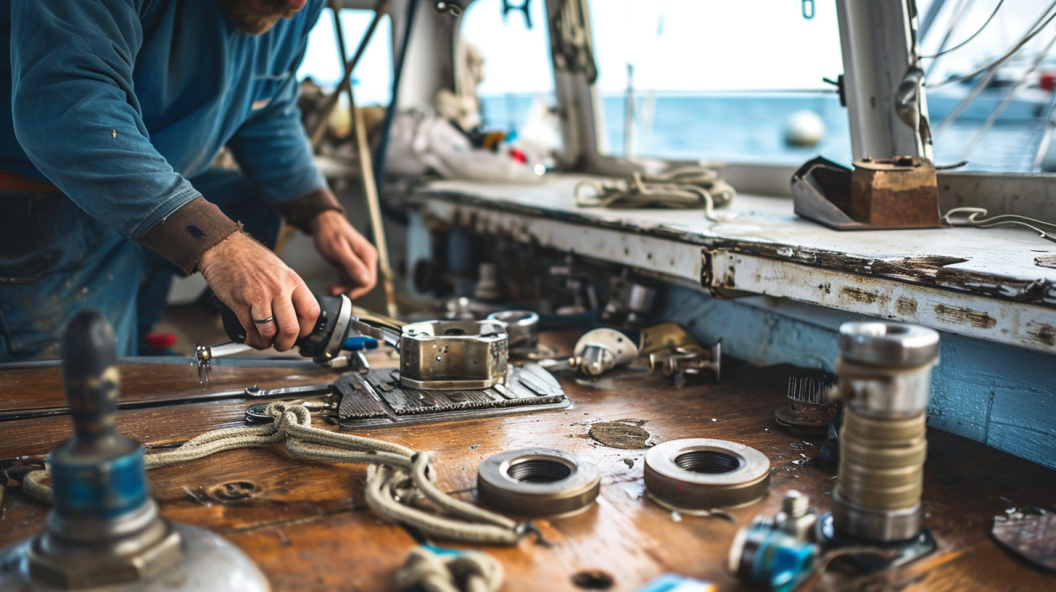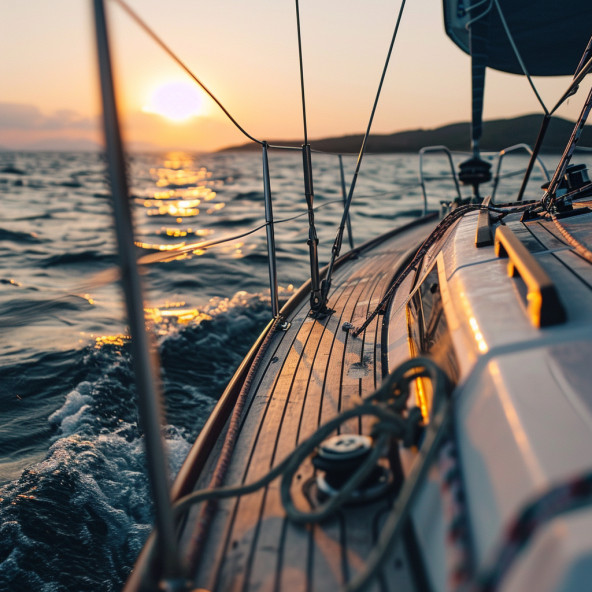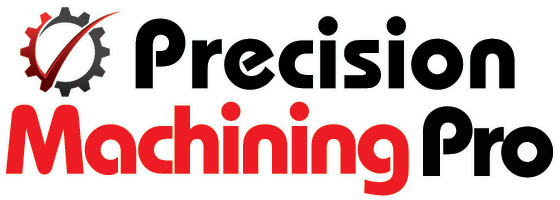Marine deck hardware refers to the range of fittings and components installed on the deck of a boat to serve essential features connected to dealing with, safety and security, and vessel efficiency. From cleats and bollards made use of for linking dock lines to hatches giving access listed below deck, watercraft hardware consists of all deck-mounted components that are not fixed superstructures.
Recognizing the objective and properties of various marine equipment pieces is essential for boat owners and operators. Correctly set up and maintained equipment not only improves functionality yet likewise boosts safety and security on board. This comprehensive guide covers all the crucial details on selecting, taking care of and safely utilizing various sorts of vital boat deck equipment to get the most worth out of the investment.

Recognizing Marine Deck Hardware
Marine equipment forms an important part of angling watercraft, cruisers, passenger ferries as well as commercial vessels. The deck fittings set up make it possible for essential procedures aboard relating to docking, anchoring, lifting sails, and storing equipment. They additionally give accessibility to indicate saved devices, water/waste storage tanks, and spaces below the deck.
From securing cleats and bow rollers to hatch handles and boarding ladders, all pieces of deck equipment contribute to the seamless functioning of a vessel. Buying resilient and high-quality elements matched to the vessel makes certain smoother sailing and improves onboard safety and security.
Types of Marine Deck Hardware
The marketplace supplies stainless steel marine equipment pieces in a variety of classifications, dimensions and requirements to meet various functions on the deck. Several of the typical categories include:
Cleats
Deck cleats are anchoring factors utilized to protect dock lines and fenders when the watercraft is alongside a pier or loading. They are developed to handle tension and abrasion triggered by the vessel’& rsquo; s movement. Web cam cleats can additionally be utilized to tie halyards and control lines on sailing boats.
Chocks
Utilized combined with cleats, deck chocks have fairleads that lead dock lines at the point of entrance on the deck and stop unnecessary wear and friction. Timing bitts also offer a similar feature aside from acting as strong bollards when 2 lines require to be incorporated in opposing directions.
Bollards
Bollards give safe and secure accessory points for towing and mooring lines subjected to considerable lots. Detachable variations allow for storing heavy rope tails clear off the deck. Vessels like commercial angling watercraft have heavily loaded horned ** hauling bitts ** to handle thick tow cords.

Hatches
Supplying access to storage compartments and tank spaces below deck, hatches include different opening mechanisms like moving, pivoted, or flush styles using compression locks. A ** leak-proof hatch ** has rubber gaskets to prevent access of water when shut.
Fairleads
Additionally known as lead blocks, fairleads with sheaves assist guide support rodes over the top or control lines aft without entangling. Recessed fairleads purge with the deck provide an obstruction-free surface area.
Various other equipment
Various other common pieces include hoist rings, placing bases, boarding actions and ladders, rail installations, air flow cowls, rollers, pads, and stoppers made use of for different deck procedures. Customized fabricated pad eyes aid in firmly installing equipment onboard vessels.
Materials Used in Deck Equipment
The marine environment demands equipment that can hold up against corrosion, impact lots, and surface degradation over time. Suppliers utilize products like ** stainless steel, bronze, and lightweight aluminum ** to balance practical sturdiness with cost-effectiveness.
Stainless-steel
Extremely resistant to rusting in saltwater conditions, stainless steel316 aquatic quality installations have molybdenum for improving corrosion security. Nonetheless, the surface requires routine maintenance to keep its beautiful surface and protect against matching as a result of chemical or mechanical damage.
Bronze
An alloy composed generally of copper, aquatic bronze equipment stands up to saltwater corrosion while preserving practical toughness to endure misuse. Yet tends for biofouling which requires consistent polishing for smooth procedure.
Aluminum
Plated lightweight aluminum marine equipment appreciates tremendous popularity being moderately priced, light-weight, and low upkeep. Though not as solid as steel or bronze, modern alloy mixes avoid galling or taking up. Regular rinsing maintains the surface sheen.
Teak wood is likewise frequently made use of for visual appeal in success cases along with sturdiness, though it calls for much more upkeep to retain its rich gloss by sanding and re-varnishing. Synthetic board imitates the wood-grain texture for reasonably low upkeep over the years.
Picking the Right Marine Deck Hardware
For safe handling and optimum vessel efficiency, it’s essential to select deck equipment components best matched to the specific watercraft design. Consider elements like:
- Objective: Type of deck hardware needed like cleats, chocks, pad eyes, and so on.
- Place: Setup area on deck for practical gain access to and usage.
- Boat dimension & kind: Ability, freeboard height, underway rate, and various other elements impacting part sizing and specifications.
- Design design: Matching surface and form with existing installations for a uniform appearance.
- Applications: Tons capability, line sizes, fitting classifications specialized for sailboats, motorboats, and so on.
- Use frequency: Occasional vs sturdy day-to-day use affects durability needs.
- Service setting: Rust resistance needs higher in saltwater, polluted, or cooler locations.
Respectable makers clearly define each product’s safe workload which needs to be complied with faithfully to prevent dangerous overloads. Consulting experienced watercraft contractors helps pick compatible hardware pieces and proper sizing.
Installment and Upkeep
Hiring reliable installers makes sure deck tools mount safely on a vessel per the designer’s layout. Poor installation triggers fittings to function loose, leak, or become harmed by onboard activity and loads. Make sure:
- Sufficient backing plates support bigger strengthened pieces for distributing localized stresses.
- Sealing washing machines or compounds avoids leaks through bolt holes right into bulkheads.
- Sufficient drain around installs to avoid merging of acidic bilge water that corrodes base plates.
- Counterbored bolts where needed to avoid line snags, injuries, and damage to parts.
- Proper sizing of all fastening aspects with adequate threaded acquisition.
With thousands of dissimilar steels onboard watercraft, galvanic deterioration can rapidly harm substandard top-quality installations not made for marine service. Normal upkeep is important for long-term efficiency.
- Apply fresh layers of wax onto stainless steel surfaces to maintain the safety chromium oxide layer.
- Wash salt down payments after every voyage to stay clear of matching.
- Reseal used gaskets and lube O-rings on water-tight hatches to stop leakages.
- Check established screws and fasteners, retightening when required.
- Flush with high-pressure water to remove crud and sea growth around deck equipment.
Safety Considerations for Marine Deck Hardware
Loose or damaged aquatic installations can trigger accidents injuring teams or passengers. Execute frequent checks and preserve hardware properly besides complying with standard precautions:
- Periodic assessment of all deck tools to determine wear/damage
- Make sure installations are ranked to handle ** optimum expected loads ** without yielding or pulling out of the deck
- Used or splintered ** woodwork surrounding equipment ** positions laceration hazards
- Smooth rounded sides on hardware avoid rope snags or cuts accessible and arm or legs
- ** Non-skid pads ** Supply grip underfoot near equipment procedure locations
- Regard maker safety guidelines for working load restrictions throughout the use
- Make certain kids and non-essential workers stand clear during anchoring/docking tasks
Accidents can occur even with preventative measures. Undergoing qualified first-aid training assists in reacting much better to onboard clinical emergencies.
Top Brands and Manufacturers
Over their cumulative years dealing with aquatic applications internationally, notable gamers have acquired recognition for developing long-lasting deck hardware meeting critical quality requirements:
- Harken –– Focuses on performance sailing hardware including winches, tourists, furlers besides utilitarian fittings.
- Schaefer Marine –– Renowned for technology in marine equipment components along with cruising systems.
- Ronstan –– Leading provider of setting up components and control system devices for competitive racing courses.
- Antal –– Premier series of chocks, cleats, fairleads, and various other deck devices with worldwide existence.
- Lewmar –– Originally a distributor of anchor windlasses, now related to a catalog spanning countless deck hardware products.
Shops focusing on boat parts supply marine-grade offerings by relying on brands vetted through years of overseas service. Custom-fabricated stainless steel items are additionally readily available for low-volume needs.
Where to Get Marine Deck Hardware
Owing to the technical complexity of parts and the need for tons of testing information, acquiring deck installations from accredited sellers ensures compliance with marine requirements. Ask lawns regarding:
- Certification qualifications of suppliers
- Traceability through branding and component numbering
- Documents with details on the quality of products, quality checks carried out, and service warranty coverage
- Compatibility with your vessel’s existing format, layout scheme, and operational environment
Chandlery shops located around marinas cater to watercraft owners requiring marine-grade deck hardware for repair service, upgrades or new tasks. Online stores offer included comfort for sourcing components provided to your front door. Ensure checking sellers’ credentials, terms of the acquisition, and interacting with unique needs before buying installations.
Real-Life Examples and Case Studies for Marine Deck Hardware
Tough aquatic hardware maintains vessels of all dimensions cruising safely all over the world. A few intriguing instances:
When solo circumnavigator Jessica Watson shed her boarding ladder 1000 miles from land, quick thinking and an undamaged pad eye on deck enabled her to fabricate a makeshift ladder using extra components onboard and proceed with her voyage securely.
Throughout rough seas, a snapped mainsheet tourist on Peter Bray’s 40-footer disabled steering control. The spare tourist auto on board enabled seafarers to bypass the break and jury-rig steering to limp back to shore. Always carrying spares proves very useful when far offshore.
Greg Konrath, who cruised over 100,000 miles on various crafts states constantly examined hardware installations during passage for indicators of loosening or fracturing brought on by consistent motion and resonances encountered offshore.

Verdict
This overview covers deck hardware – an oft-disregarded yet vital cog maintaining watercraft mechanisms running safely and successfully at sea for prolonged periods. Cautious selection with intended upgrades making use of marine-grade fittings stops issues taking place far offshore while improving the onboard experience via the convenience of taking care of procedures during passages and at ports.
Buying trusted top-quality fittings purpose-built for aquatic usage might cost even more in advance –– yet pays back through years of trusted solutions while maintaining crew and vessels protected offshore. Upkeep completes the bundle for peak performance when dealing with components often mixed up.
Call to Action
Prepared to upgrade your watercraft with brand-new deck equipment for improved performance? Contact us or see our online shop to assess aquatic hardware options that fulfill your requirements from a complete variety of offerings specially curated by sector experts!
Added Resources
Guide to Anchoring Equipment
How to Look After Teak Decking
Picking the Right Boat Fender





